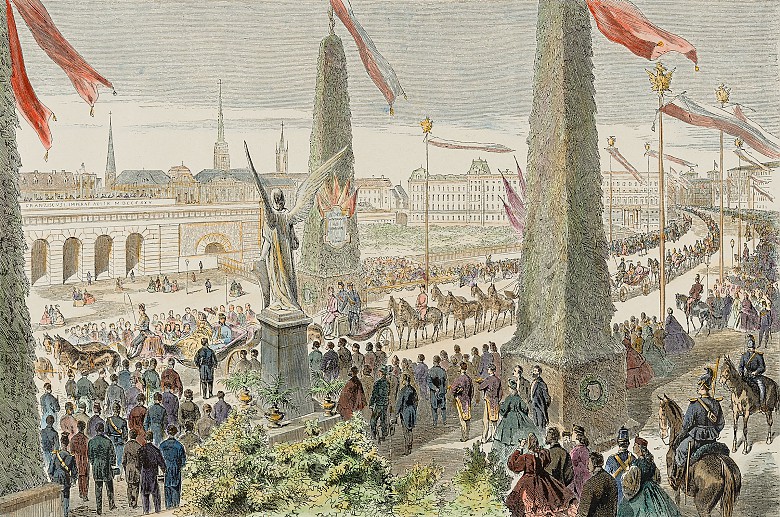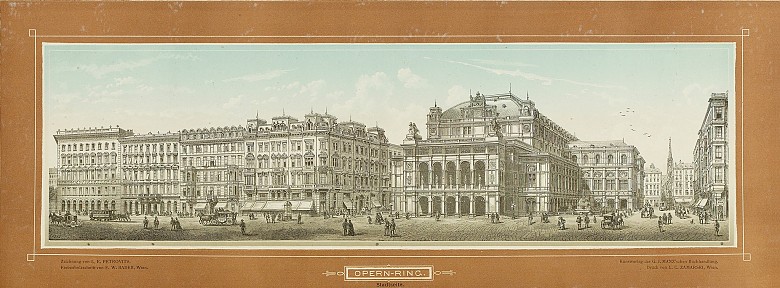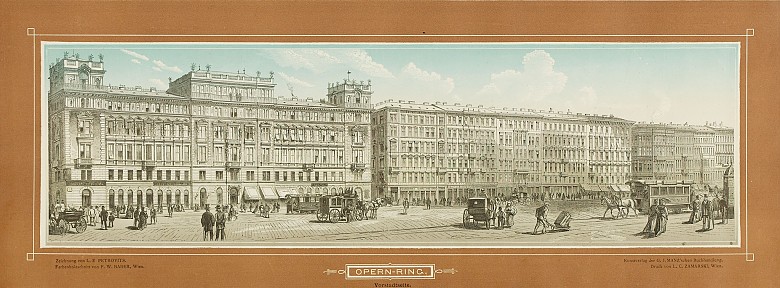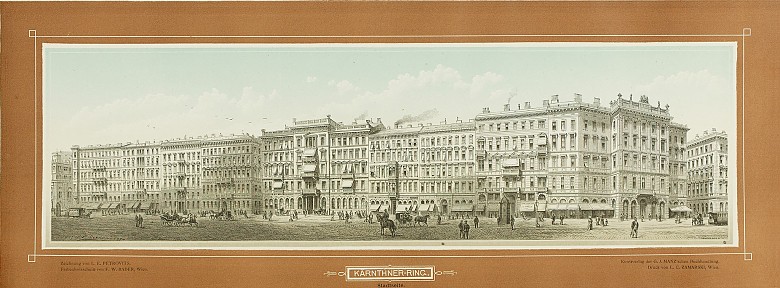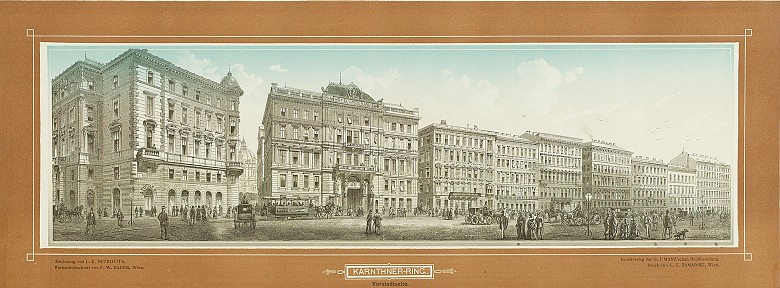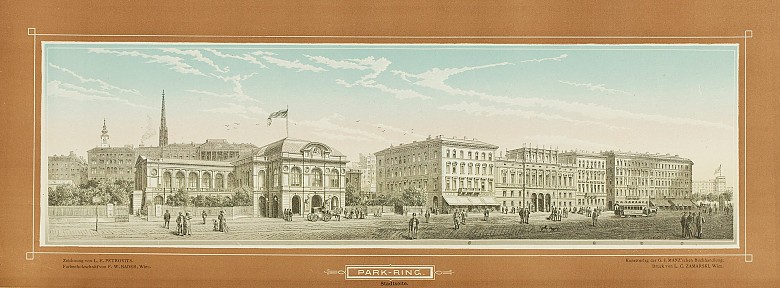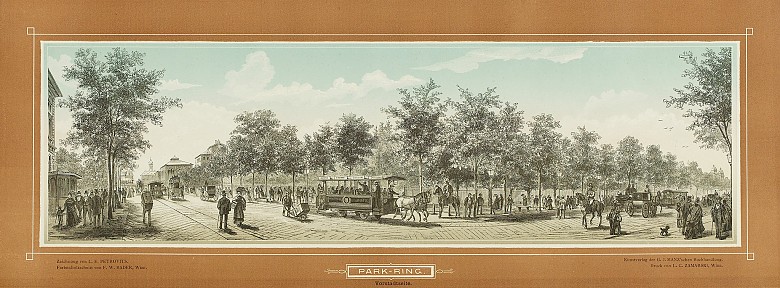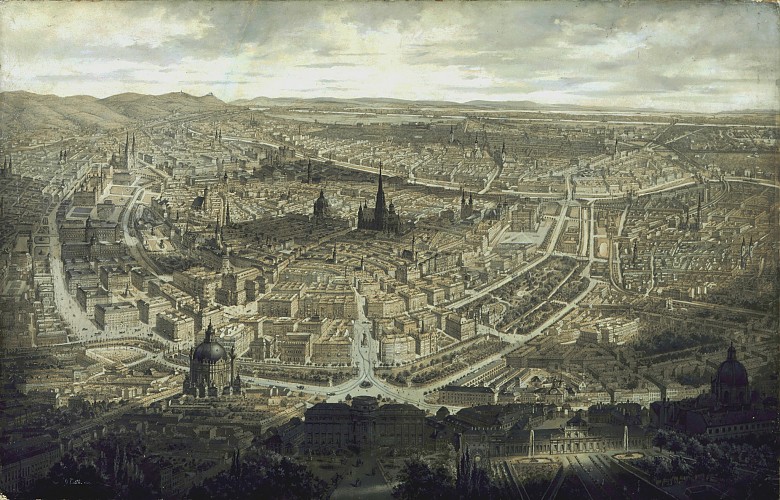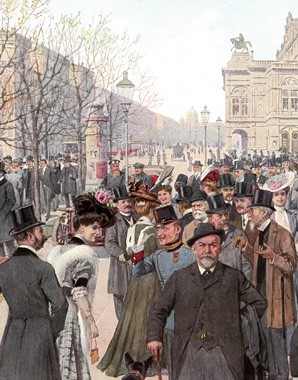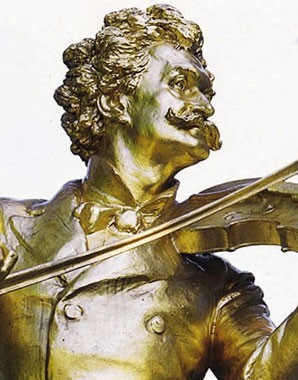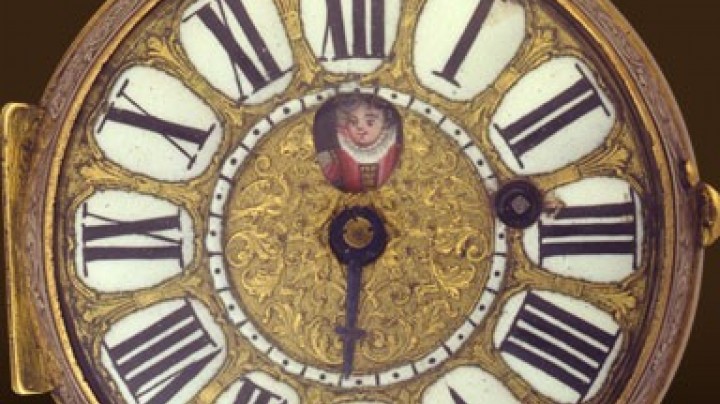The construction of the Ringstrasse
Vienna’s magnificent boulevard is constructed at a rapid pace, using the labour of thousands of migrant labourers from the Empire.
This huge construction project was financed by the sale to private individuals of the plots of land created once the old fortifications had been levelled (amounting to a total of 2.4 million square metres, the equivalent of around 300 football pitches) and that were not earmarked for public buildings, streets or parks. This revenue amounted to 63 million gulden. In return, purchasers were exempted from tax for a period of thirty years as long as they started on the construction of a residential dwelling within one year and the work was completed within four years.
Construction was rapid: the demolition of the ramparts began in March 1858, and by 1 May 1865 the first section of the boulevard up to the Burgtor was opened with a ceremonial carriage drive by Emperor Franz Joseph. The Court Opera was still under construction and only a few residential buildings on the sections named Opernring and Kärntnerring had been completed at this point.
The rapid pace of construction on the Ringstrasse was achieved on the backs of the male and female labourers, the majority of them migrant building labourers and brickmakers from Bohemia, who worked long hours for minimal wages.
The creation of the Ringstrasse meant the loss of the glacis, which had been planted with trees at the end of the eighteenth century and was a popular place of recreation for the Viennese. All that remained of this large expanse of green was the Stadtpark, laid out by the municipal authorities as an English landscape garden. In 1867 a Kursalon (spa assembly room) was opened in the park where people could take the waters for their health. A few years later it was turned into a dance hall where the Viennese swayed to the strains of Johann Strauss.
